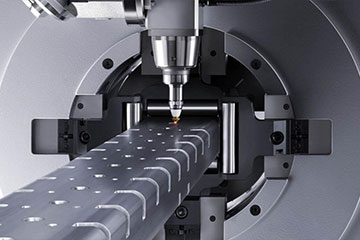Blueprint to Reality: Ensuring Accuracy in Metal Fabrication and CNC Machining+ View more
Blueprint to Reality: Ensuring Accuracy in Metal Fabrication and CNC Machining
+ View more
Date:2024-03-08 16:00
Manufacturing industries continually strive for precision and excellence, especially when it comes to metal fabrication and CNC (Computer Numerical Control) machining. Obtaining accurate results in these processes is not just a matter of following blueprints; it requires a comprehensive understanding of materials, meticulous planning, and advanced technology. This article explores the strategies and methodologies employed to ensure accuracy in metal fabrication and CNC machining, bolstered by real-world examples.
Importance of Precision
In fields such as aerospace, automotive, medical devices, and construction, the margin for error is often negligible. The components produced must adhere strictly to their specifications, with tolerances that can be as tight as ±0.0005 inches. Precision is vital not only for the functionality of the parts but also for safety. In the aviation industry, for instance, a slight deviation from the design specs could lead to catastrophic failures.
Material Considerations
Material selection plays a crucial role in achieving accuracy. Different metals have unique properties that can affect the final product, such as tensile strength, ductility, and thermal expansion. For example, Invar, an alloy known for its low thermal expansion, is regularly used in applications requiring high dimensional stability over varying temperatures, like satellite and telescope components.
Advanced Technology & Equipment
Employing state-of-the-art CNC machines is critical in turning blueprints into highly precise metal parts. Modern CNC machines offer high-speed machining capabilities and are equipped with features like multi-axis cutting abilities, real-time feedback systems, and adaptive control technologies. These features allow for complex geometries and tight tolerances.
One poignant example can be found in the automotive industry where companies like BMW use advanced CNC milling machines to produce engine components that meet exacting standards. The precision achieved contributes significantly to the performance and efficiency of their vehicles.
Calibration & Maintenance
To maintain the highest level of accuracy, regular calibration and maintenance of the equipment are paramount. Machines need to be checked against certified measurements standards, and any deviations must be corrected immediately. Failing to adhere to a strict calibration schedule can result in inaccuracies that, while minute, may cause significant repercussions in sensitive applications.
Quality Control Procedures
Quality control is the backbone of precision manufacturing. Techniques such as statistical process control (SPC) are utilized to monitor and control the manufacturing process. Through SPC, engineers can determine if the process is statistically within acceptable limits or if corrective actions are needed.
Take, for instance, the case study of a prominent medical device manufacturer that uses CNC machining to produce surgical instruments. The company implemented rigorous quality checks at multiple stages of production. This approach led to a remarkable reduction in product variance and a near-zero defect rate.
Skilled Workforce
The sophistication of technology must be matched by the skill level of the operators and technicians. Proper training ensures that the workforce can interpret blueprints accurately, set up machinery correctly, and understand the nuances of the machining process.
Conclusion
Transforming blueprints into tangible, precise metal components is a complex process that demands a combination of the right materials, cutting-edge technology, stringent quality control, and skilled personnel. By adhering to these principles, manufacturers can ensure that they meet the exact standards required by today's demanding applications. The success stories from industries like aerospace, automotive, and medical sectors stand as testaments to the efficacy of these practices. As we continue to push the boundaries of what's possible in metal fabrication and CNC machining, a commitment to precision and accuracy remains the foundation upon which safety and innovation are built.
Share to:
Recommend wonderful blog posts

